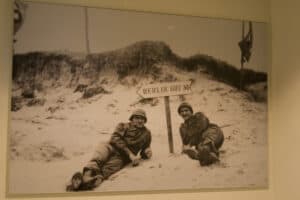European travel in the summertime is often associated with warm and sunny conditions. Still, spring and fall can also be great times for travel due to less crowded attractions and cooler temperatures that make your journey comfortable.
People familiar with Nazi atrocities will recognize Josef Mengele, but few realize Japan conducted similar experiments on its prisoners. Yad Vashem offers a sobering reminder of this dark chapter in history.
Nuremberg Trials
The Nuremberg trials were an extraordinary event in international law and were instrumental in ushering in a new era for human rights. After World War II, allies from America, Great Britain, France, and Russia formed an international tribunal to prosecute Nazi leaders for war crimes, crimes against peace, and crimes against humanity.
Prosecutors brought 24 senior Nazi political and military figures to trial, such as Hermann Goering, Rudolph Hess, Admiral Karl Donitz, Joachim von Ribbentrop, Alfred Rosenberg, and Albert Speer – with SS chief Heinrich Himmler opting for suicide by swallowing an illicit cyanide capsule a few hours before being arrested.
Allied forces also apprehended thousands of lesser-known Nazi perpetrators and had the War Crimes Investigation Teams (WCIT) prosecuting suspects within the British zone of Germany.
Anne Frank’s House
Renovation of Anne Frank’s Amsterdam home during World War II has been done to tell her story to new audiences better. At the heart of it is her secret annex, where her diary was written from July 1942 until August 1944, when they were arrested and deported to concentration camps; only Anne’s father survived this ordeal.
Otto Frank wanted his home preserved as it had been before Nazis overran it; therefore, there is no furniture inside its rooms; instead, quotes from Otto’s diary, photos, film images, and objects belonging to those hiding and helpers are displayed to shed light on what transpired there. Additionally, its red-checked diary can also be seen.
The Anne Frank House (Dutch: Anne Frank Huis) in Amsterdam, Netherlands, is one of the most visited museums in Europe, with over one million annual visitors. It is situated on the Prinsengracht Canal close to Westerkerk Church.
D-Day Landings
 On June 6th, 1944, Allied forces stormed the beaches of Normandy, marking a turning point in World War II. Through this Newsweek slideshow, you can witness first-hand images comparing then and now photos from landing sites, showing how much has changed since that pivotal day in history.
On June 6th, 1944, Allied forces stormed the beaches of Normandy, marking a turning point in World War II. Through this Newsweek slideshow, you can witness first-hand images comparing then and now photos from landing sites, showing how much has changed since that pivotal day in history.
Operation Overlord – better known today as D-Day Landings – depended upon unprecedented cooperation among international armed forces. Under American General Dwight Eisenhower’s command of the Supreme Headquarters Allied Expeditionary Force (SHAEF), the French Resistance and British Special Operations Executive members assisted in breaking through German defenses through sabotage.
The Allies also employed extensive military deception tactics to mislead German forces about the date and location of their invasion but ultimately succeeded. Although limited by poor weather and logistical problems, their plan ultimately succeeded.
The Berlin Wall
After World War II, Berlin emerged as the center of an intensive reconstruction effort. Under the Yalta and Potsdam agreements, Germany was divided into occupation zones governed by each of the Four Powers–Soviets in the East, United States, Britain, and France in the West;
As time passed, East Germans began fleeing Westward en masse – including skilled workers, professionals, and intellectuals – threatening its economic viability and viability as a socialist state.
In August 1961, East Germany’s leadership constructed a barrier to prevent its population from fleeing to West Germany; it quickly became known as The Berlin Wall. It marked a physical separation between two worlds–capitalism in the West and communism in the East.
Until November 1989, when it finally collapsed due to Mikhail Gorbachev’s statements that the Soviet Union wouldn’t use force to prevent people from changing their governments – one of the most symbolic moments in Cold War history.





